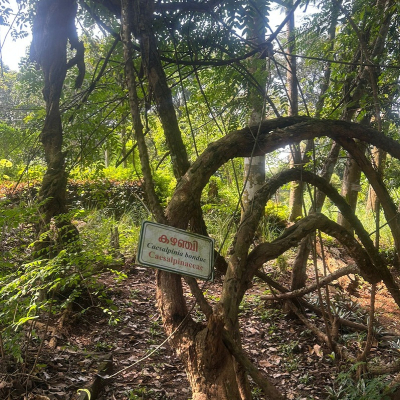Caesalpinia bonduc (Linn) Roxb.
Synonyms : Caesalpinia bonducella Fleming , Caesalpinia crista Linn.
Family : Fabaceae
Parts Used : Root , Leaf , Seed , Bark , Nut
Vernacular Names :-
| English | : | Bonduc nut, Fever nut |
| Malayalam | : | Kazhanchi |
| Hindi | : | Kantikaranja |
| Sanskrit | : | Latakaranjah |
| Bengali | : | Natakaranja |
| Gujarathi | : | Kakachia |
| Kannada | : | Galiga |
| Tamil | : | Kalicikkai |
| Telungu | : | Gachchakya |
Distribution and Habitat: It is distributed through out India.
Botany: A large straggling very thorny shrub, branches armed with hooks and straight hard yellow prickles.
- Leaves: Bipinnate, large, stipules foliaceous, pinnae 7 pairs, and leaflets 3-8 pairs with 1-2 small recurved prickles between them on the underside.
- Flowers: Yellow, fragrant, in axillary and terminal racemes.
- Fruit: Pods oblong, densely armed with sharp wiry prickles, dehiscent.
- Seeds: 1 or 2, globose or ovoid, grey with a smooth shiny surface.
Properties: Antiperiodic, antispasmodic, anthelmintic, febrifuge
Chemical constituents: α-, β- & γ-caesalpin, ε-caesalpin.
Uses: Root bark used in dyspepsia, amenorrhoea, and flatulence. Leaves are useful in elephantiasis, pharyngodynia, splenomegaly, disorder of leaves. Seeds are used in inflammation, colic, intermittent fevers. Oil– stop discharges from the ear, remove freckles. Kernels – fever
Formulations: Cangeryadi gulika, Ponkaradi gulika
Propagation: It can be propagated by seeds. Dormancy of seed can be overcome by acid scarification, light and temperature treatment or treatment with concentrated sulphuric acid for 30-90 minutes.



